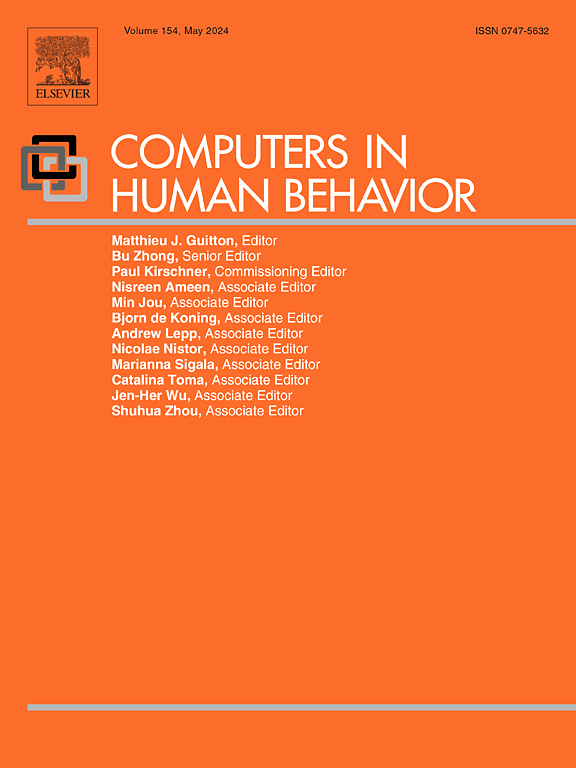将AI聊天机器人的使用解释为上下文对齐:跨上下文和文化使用AI聊天机器人背后的动机
IF 9
1区 心理学
Q1 PSYCHOLOGY, EXPERIMENTAL
引用次数: 0
摘要
本研究借鉴了传播学中的启示概念和广告研究中的语境一致性原则,开发了一种与人工智能聊天机器人在不同语境和文化中的使用相关的启示类型。我们认为,感知能力和使用环境之间的一致性显著地塑造了用户对人工智能聊天机器人的期望和参与。作为第一步,我们开发了一套全面的人工智能聊天机器人功能。随后,我们调查了这些启示在五种不同环境下的预测价值,包括在家里、在工作中、在公共场所、在通勤期间和在学校。在来自中国大陆、德国、香港、日本和美国的N = 5096名AI聊天机器人用户的总样本中,平行分析确定了使用AI聊天机器人的七种一般功能(私人社交存在、可访问性、持久性、匿名性、带宽、可编辑性和会话控制)和五种特定功能(写作辅助、情感辅助、编码辅助、个人辅助、翻译辅助)。这些启示一致地预测了跨文化边界的特定于上下文的人工智能聊天机器人的使用。本文章由计算机程序翻译,如有差异,请以英文原文为准。
Explaining the use of AI chatbots as context alignment: Motivations behind the use of AI chatbots across contexts and culture
Drawing from the affordances concept in communication and the advertising research principle of context alignment, this study develops a typology of affordances associated with AI chatbot use across diverse contexts and cultures. We argue that the congruence between perceived affordances and the context of use significantly shapes users’ expectations and engagement with AI chatbots. As a first step, we developed a comprehensive set of AI chatbot affordances. Subsequently, we investigated the predictive value of these affordances for chatbot use across five different contexts, including at home, at work, in public spaces, during commuting, and at school. In a total sample of N = 5096 AI chatbot users from mainland China, Germany, Hong Kong, Japan, and the United States, parallel analysis identified seven general (private social presence, accessibility, persistence, anonymity, bandwidth, editability, and conversation control) and five specific affordances (writing assistance, emotional assistance, coding assistance, personal assistance, translation assistance) for the use of AI chatbots. These affordances consistently predicted context-specific AI chatbot use across cultural boundaries.
求助全文
通过发布文献求助,成功后即可免费获取论文全文。
去求助
来源期刊

Computers in Human Behavior
Multiple-
CiteScore
19.10
自引率
4.00%
发文量
381
审稿时长
40 days
期刊介绍:
Computers in Human Behavior is a scholarly journal that explores the psychological aspects of computer use. It covers original theoretical works, research reports, literature reviews, and software and book reviews. The journal examines both the use of computers in psychology, psychiatry, and related fields, and the psychological impact of computer use on individuals, groups, and society. Articles discuss topics such as professional practice, training, research, human development, learning, cognition, personality, and social interactions. It focuses on human interactions with computers, considering the computer as a medium through which human behaviors are shaped and expressed. Professionals interested in the psychological aspects of computer use will find this journal valuable, even with limited knowledge of computers.
 求助内容:
求助内容: 应助结果提醒方式:
应助结果提醒方式:


